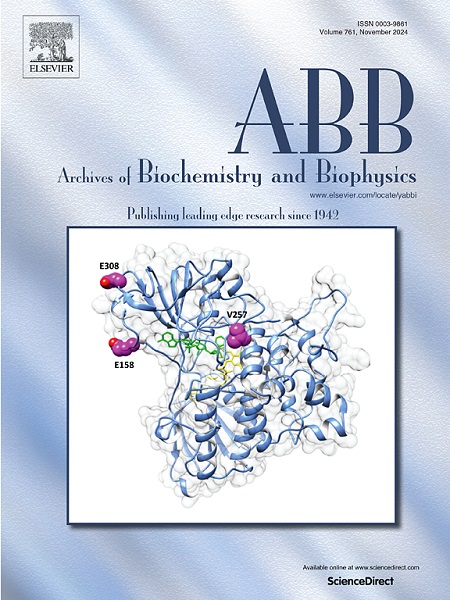通过神经网络时代的硅学建模解决 APOE 的结构难题:AlphaFold II 能否帮助解决缺乏全长蛋白质结构的问题?
IF 3.8
3区 生物学
Q2 BIOCHEMISTRY & MOLECULAR BIOLOGY
引用次数: 0
摘要
编码载脂蛋白 E 的 APOE 基因是长寿和老年相关疾病的预测因子。尽管进行了大量遗传学研究,但由于脂蛋白 E 的结构特性,有关其影响人类表型的分子机制的数据仍不完整。最近,一些研究使用了基于蛋白质配体对接的默克药物发现技术,进一步凸显了脂蛋白 E 缺乏三维结构的问题。通过分子动力学模拟,我们发现脂蛋白 E 的 AlphaFold II 模型在构象上与唯一可用的核磁共振结构 2L7B 和通过圆二色性光谱获得的结构存在显著差异:ε4 异构体缺乏 R61 和 E255 之间的盐桥,而 ε2 和 ε3 异构体具有广泛的域间相互作用网络。我们的发现对使用 AlphaFold II 获取分子对接起始构象的益处提出了质疑。本文章由计算机程序翻译,如有差异,请以英文原文为准。
Tackling APOE's structural challenges via in silico modeling in the era of neural networks: Can AlphaFold II help circumvent the problem of lacking full-length protein structure?
The APOE gene, encoding apolipoprotein E, is a predictor of longevity and age-related diseases. Despite numerous genetic studies, the data on molecular mechanisms by which apolipoprotein E affects the human phenotype remain incomplete due to the structural properties of the protein. Recently, a number of studies have used in silico drug discovery techniques based on protein-ligand docking, further highlighting the issue of lacking 3D structure of apolipoprotein E. Using molecular dynamics simulation, we found that AlphaFold II models of apolipoprotein E conformationally significantly differ both from the only available NMR structure, 2L7B, and structures obtained through circular dichroism spectroscopy: the ε4 isoform lacks the salt bridge between R61 and E255, while the ε2 and ε3 isoforms have extensive networks of interdomain interactions. Our findings challenge the benefits of using AlphaFold II for obtaining starting conformations for molecular docking.
求助全文
通过发布文献求助,成功后即可免费获取论文全文。
去求助
来源期刊

Archives of biochemistry and biophysics
生物-生化与分子生物学
CiteScore
7.40
自引率
0.00%
发文量
245
审稿时长
26 days
期刊介绍:
Archives of Biochemistry and Biophysics publishes quality original articles and reviews in the developing areas of biochemistry and biophysics.
Research Areas Include:
• Enzyme and protein structure, function, regulation. Folding, turnover, and post-translational processing
• Biological oxidations, free radical reactions, redox signaling, oxygenases, P450 reactions
• Signal transduction, receptors, membrane transport, intracellular signals. Cellular and integrated metabolism.
 求助内容:
求助内容: 应助结果提醒方式:
应助结果提醒方式:


